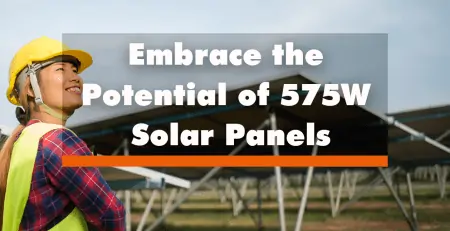Rooftop solar panel for home
Rooftop solar panels are a type of renewable energy technology that can be installed on the roofs of residential homes to generate electricity from the sun. As traditional energy prices continue to rise and the global climate crisis worsens, rooftop solar panels are becoming an increasingly popular option for homeowners looking to reduce their reliance on fossil fuels and lower their carbon footprint.
Advantages of Rooftop Solar Panels
Here are some of the key advantages of installing rooftop solar panels:
- Clean energy generation: Rooftop solar panels generate electricity from the sun’s rays, a renewable and clean energy source. This means that homeowners can reduce their carbon footprint and contribute to a healthier environment.
- Energy independence: With rooftop solar panels, homeowners can generate their own electricity and reduce their reliance on traditional energy sources.
- Lower energy bills: By generating their own electricity, homeowners can reduce their monthly energy bills.
- Increased property value: Homes with solar panels installed may have higher property values compared to homes without solar panels. This can be an added benefit for homeowners looking to sell their homes in the future.
- Government incentives: Numerous governments provide incentives to homeowners who choose to install solar panels, including tax credits and rebates. These incentives assist in reducing the initial installation expenses and making solar power a more cost-effective option.
Understanding Your Home’s Solar Potential
Let’s take a closer look at each of these factors:
- Roof orientation: The orientation of your roof plays a critical role in determining its solar potential. Ideally, your roof should face south, as this allows it to receive the most sunlight throughout the day. East- and west-facing roofs can also work, but they may receive less sunlight overall.
- Shading: Shading can significantly impact the performance of your solar panels. If your roof is heavily shaded by trees, buildings, or other obstructions, it may not be a good candidate for solar panel installation.
- Structural integrity: Finally, it’s important to ensure that your roof is structurally sound and can support the weight of solar panels. Most rooftops are strong enough to support solar panels, but it’s still important to have a professional assess your roof to make sure it can handle the weight and other stresses of solar panel installation.
Types of Rooftop Solar Panels
- Monocrystalline solar panels: These panels are crafted from a single silicon crystal and are renowned for their excellent efficiency and elegant design.
- Polycrystalline solar panels: These solar panels are made from multiple silicon crystals and are typically less expensive than monocrystalline panels.
- Thin-film solar panels: These solar panels are made from a thin layer of photovoltaic material and are often used in commercial settings.
Installation Process
Installing rooftop solar panels on your home typically involves several steps, including:
- Site survey: A qualified installer will visit your home to assess your roof’s suitability for solar panel installation. They will evaluate factors such as roof orientation, shading, and structural integrity to determine the best placement for your solar panels.
- Design: After the site survey, the installer will create a design plan for your solar panel system. This plan will take into account your energy needs and the size and layout of your roof.
- Permitting: Before installation can begin, you’ll need to obtain the necessary permits from your local government.
- Installation: Once you have the necessary permits, your installer will begin the installation process.
Maintenance and Upkeep
Here are some tips for maintaining your rooftop solar panel system:
- Clean your panels: Dirt, dust, and debris can accumulate on your solar panels and reduce their efficiency. Clean your panels regularly with a soft brush and mild detergent to keep them free of debris.
- Monitor your system’s performance: Most solar panel systems come with monitoring software that allows you to track your system’s performance. Check your system’s performance regularly to ensure that it’s operating at peak efficiency.
- Check for damage: Inspect your panels regularly for signs of damage, such as cracks or scratches. If you notice any damage, contact your installer right away to have it repaired.
- Trim trees and bushes: If trees or bushes near your home are casting shade on your solar panels, trim them back to ensure that your panels receive maximum sunlight.
Cost and Financing Options
Installing rooftop solar panels involves several costs, including equipment, installation, and permitting fees. In this section, we’ll break down the costs and discuss financing options that can help make installation more affordable.
Costs
- Equipment costs – the cost of solar panels, inverters, wiring, and other materials.
- Installation costs – the cost of hiring a professional installer to mount the solar panels, connect the wiring, and set up the system.
- Permitting costs – the cost of obtaining the necessary permits from your local government to install solar panels.
Financing Options
- Solar Loans – loans specifically designed for financing solar panel installations. These loans often have low-interest rates and longer repayment terms.
- Leases – leasing allows you to rent the solar panel system and pay a monthly fee. This option requires no upfront costs and includes maintenance and repair.
- Power Purchase Agreements (PPA) – with a PPA, a third-party provider installs the solar panels on your roof and sells the generated energy back to you at a fixed rate. This option also requires no upfront costs.
Conclusion
In conclusion, rooftop solar panel installation is a sustainable and cost-effective solution for powering your home. By generating clean energy from the sun, you can reduce your dependence on traditional energy sources, lower your monthly energy bills, and reduce your carbon footprint. Assessing your home’s solar potential, choosing the right type of solar panel, and working with a qualified installer are key steps in the installation process.


